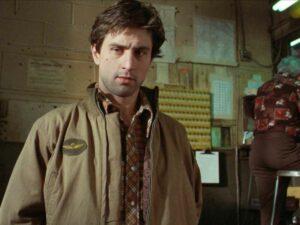Where would cinema be without the storied streets of New York City? That iconic harbor skyline boasting the Statue of Liberty and the Brooklyn Bridge. And those awe-inspiring skyscrapers like the Empire State Building and Chrysler Building. They loom large in our imagination, right up there alongside that iconic 1933 film King Kong. As our fearsome beast dangles from the top of the high-as-the-heavens Empire State Building, we in the audience can’t remember a time in the modern age when New York City wasn’t a big deal. Let’s face it – this megacity gives off major “Rome” vibes.
Nicknamed “the center of the modern world,” New York City is a compact city comprising five boroughs inhabited by approximately 8 million people, but then a greater metro area of approximately an additional 15 million people. Unsurprisingly, this all adds up to some heady movie magic. But while historically many movies had been “set” in the Big Apple over the years, many of them actually hadn’t been “shot” there. But then, one year, five decades ago, that all changed.
Midnight Cowboy
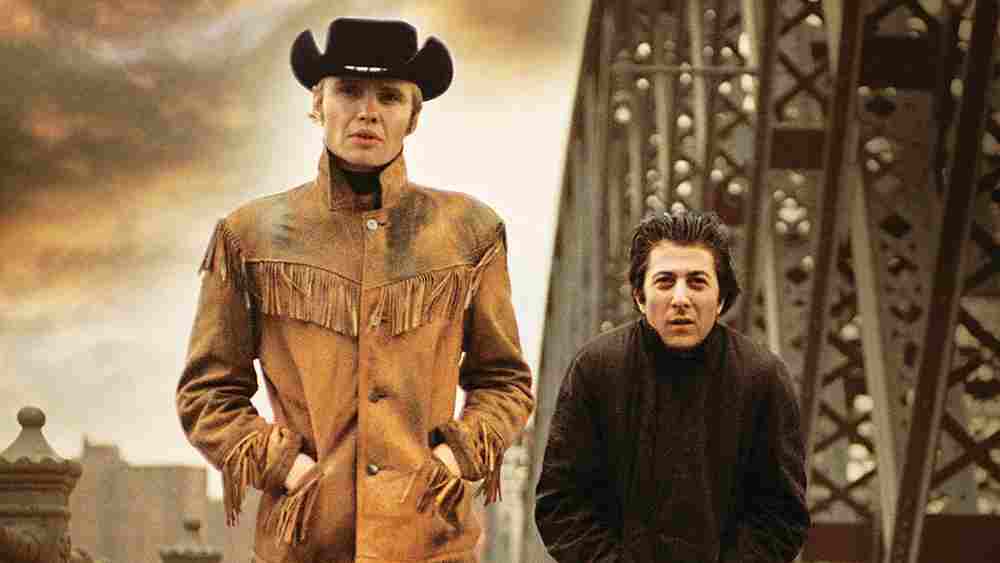
Flashback to 1969. Midnight Cowboy burst onto the cinematic scene, making up-and-comer actors Jon Voight and Dustin Hoffman into trailblazing stars, in a dark film that catapulted New York City into its own version of New Hollywood. Yes, while 1967 was undoubtedly New Hollywood’s kick-off, with films The Graduate (1967) and Bonnie and Clyde (1967) tapping into America’s counter-culture and immensely changing views toward life and by extension film, neither of these movies were set and shot in New York City as Midnight Cowboy was.
Further, both were made before the official end to the stringent Hays Production Code which had dominated Hollywood filmmaking between 1934 to 1968. Think strict rules regarding so-called unwholesome plots, nudity, swearing, and more.
WATCH: 10 Best Movie Endings (No Spoilers!)
Indeed, Midnight Cowboy was a revelation. A modern tale about a handsome and naïve Texas hustler named Joe Buck (Voight) who moves to New York City to make it big, but instead finds himself destitute with only an ill small-time thief named Ratso for a friend (Hoffman), Midnight Cowboy still resonates with filmmakers, critics, and audiences today. But why? Quite simply, it’s “New York City gritty.”
Shot in New York City and not on a fancy Hollywood set, Midnight Cowboy is a testament to “setting as character,” and how to utilize this character to impact a story and its protagonist. Director John Schlesinger is masterful in using New York City as a vibrant, breathing, living being that is based in reality. This modern megacity of the 1960s has a distinct look, feel, smell, and rhythm.
Further, like a person, it has a distinct life story that has made it who it is. From the posh shops of Fifth Ave circa 1955, to the bloody crimes of the Five Points a century before it in 1855, New York City possesses all of this rich history and more. How to capture this on a movie sound stage way out in palm tree-filled Hollywood? Impossible.
New York City’s Pulse
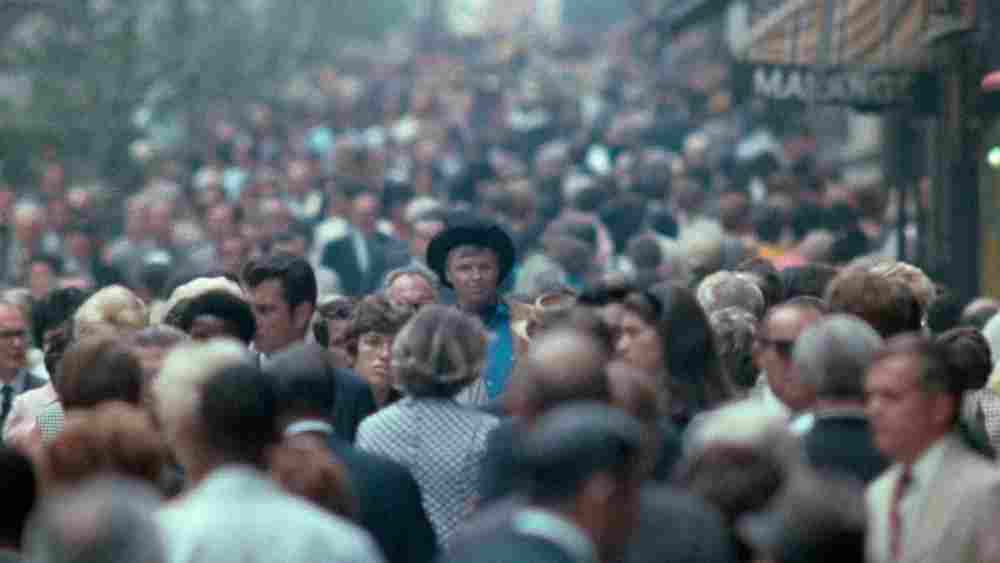
New York City is a veritable tour de force of global culture that Schlesinger taps into – the heartbeat of global immigrants, finance, government, art, publishing, fashion, and more. We instantly understand why protagonist Joe Buck would make the bus journey from faraway Texas to the wilds of this infamous urban jungle. Monikered “the city that never sleeps,” this film’s name of Midnight Cowboy proves fitting.
We are taken on a jarring, uncomfortable, downright visceral adventure of inner turmoil, outward desperation, and undeniable danger. And a lot of it occurs at night – when the dirty, dark underbelly of gigantic New York City is exposed. Joe Buck has aspirations, albeit superficial, but will he survive his truly dark, unexpected initiation?
However, additionally enthralling, this movie was shot during the colorful, psychedelic, LSD drug days of the late 1960s. So, although Midnight Cowboy unfurls its intimidating darkness, it also has brightness. Cue some truly acid-trippy scenes, where swirls of yellow, pink, and blue abound.
But wait, is that just our imagination? Kudos to cinematographer Adam Holender, who keeps us curious with bated breath to figure out all the trippy visuals, alongside all the trippy music.
All told, Midnight Cowboy won three Oscars – Best Picture, Best Director, and Best Adapted Screenplay. (Both Voight and Hoffman were nominated for Best Actor, but didn’t win.) Notable, too, Midnight Cowboy is the only X-rated film to win Best Picture.

Indeed, the Hays Production Code was over and cinema was no longer hanging out in the shallow end of the pool. No, cinema was taking the plunge into the deep end, filled with risqué plots, explicit language, and explicit visuals. Though still dramatic and innovative, Hollywood was presenting its audiences with a flush of reality, up close and personal. Decades of movie culture before it were being thrown into the wind.
As a result, we moviegoers were squirming in our seats, covering our eyes, and sometimes crying at the unvarnished beauty, or conversely ugliness, of the stories told to us. And New York City was front and center. As “the center of the modern world,” New York City transformed itself in the late 1960s and 1970s into “the most filmed city of the world.” It still unofficially holds this status today.
Aided by governmental initiatives and incentives to shoot there, New York City was akin to a beautiful daisy sprouting up through a cracked sidewalk. It became the most awesome, electrifying, progressive, and artistic destination spot for mainstream and independent filmmakers. And who were some of the best movie stars, directors, cinematographers, and more, to grace this golden, gritty 1970s paradise? Let’s take a look.
The Godfather, Serpico, and Taxi Driver
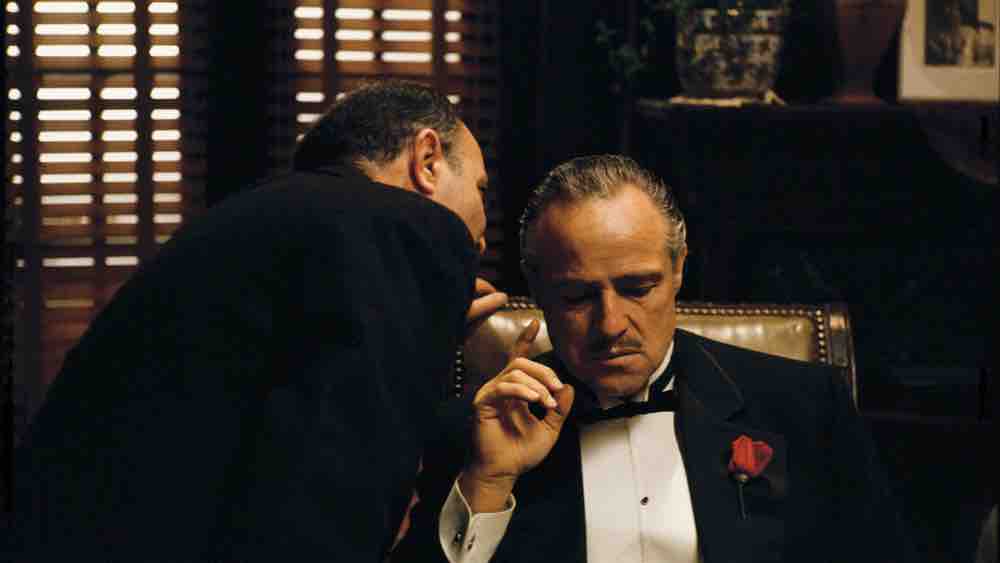
Enter New Hollywood Italian-American director Francis Ford Coppola, then actors Marlon Brando and Al Pacino in the true crime masterpiece The Godfather (1972). Shot in New York City, where the Big Apple is hearkened back to the 1940s and 1950s of the story’s timeframe, The Godfather shows us a New York City that is nonetheless “1970s modern,” as it is given a gritty and raw aesthetic treatment. No visible artificiality here. From the 1940s streets, to the 1940s hospital hallways, we’re shown the dark underworld of organized crime as committed by Italian immigrants who have settled in New York City – Italians being one of the city’s biggest immigrant populations.
And yet, The Godfather won high praise for its emphasis on family, rather than crime. Yes, we’re taken into the deep, complex, and heartfelt world of this Italian-American family. The Godfather won the Best Picture Oscar for its riveting tale, and it remains on “Best Movie” lists everywhere.

Then cue director Sidney Lumet with 1973’s Serpico. A biopic about an idealistic New York City cop named Frank Serpico (played excellently by Al Pacino fresh off his Godfather success), Serpico is quite possibly “the quintessential, modern, gritty 1970s New York City film.” Moniker aside, Serpico is known for its truly gasp-worthy shots of the city. From mammoth skyscrapers in the Bronx, to a cute Greenwich Village neighborhood, to the graffiti on the subways, Serpico boasts a truly authentic feel.
It’s a piercing sensory experience, where you can almost smell the garbage on the sidewalk. Admittedly, this isn’t the best promotional material to attract New York City tourists! But for what this movie is about, being a straight cop surrounded by crooked ones in a gigantic crime-ridden city in the 1960s, Serpico’s commitment to realism is commendable.
Sidney Lumet was the right director at the right time, and this film made him one of the most sought-after, preeminent directors in 1970s New York City filmmaking. He went on to direct Al Pacino in Dog Day Afternoon in 1975, and then won the Best Picture Oscar for the sophisticated satire Network in 1976. Sidney Lumet was ambitious, bold, and at the top of his game, as would be director Martin Scorsese.
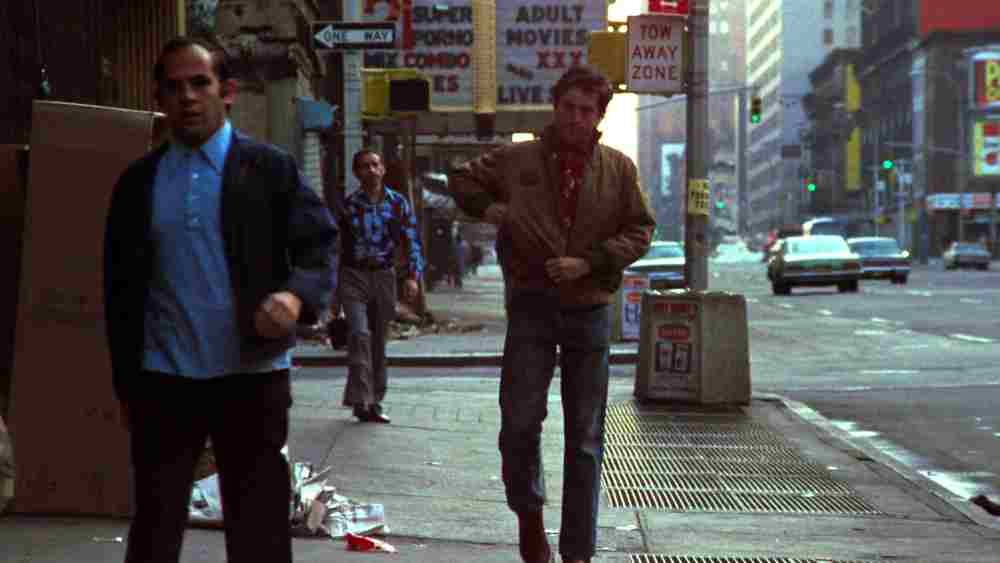
Indeed, few movies elicit such script fandom as Martin Scorsese’s Taxi Driver (1976). Cue Robert DeNiro and his character’s famous line – “Are you talking to me?” In actuality, this line was improvised by DeNiro, but we’ll let that go! A neo-noir masterpiece that chronicles the “mental” downward spiral of New York City taxi driver Travis Bickle (DeNiro), Taxi Driver is a literal “dark” film.
We see Travis Bickle driving at night through the big city, chock full of steam rising up through the streets’ potholes, and unsavory individuals loitering the sidewalks. Though not entirely on the realism plane, as Scorsese is going for a stylized neo-noir, Taxi Driver is still hugely successful in capturing a New York City that was, at this time in the 1970s, on the verge of collapse.
Additional shout-out goes to brave young actress Jodie Foster, who plays a teenage sex worker. Taxi Driver is captivating, disturbing. And New York City proves a crucial character to play alongside the human ones.
Claudine, Annie Hall, and Kramer vs. Kramer

Switching gears from dark New York City circa 1970-1980, we see that there are lighter movies, too, and these movies embody the aforementioned “beautiful daisy sprouting up through a cracked sidewalk.” Enter 1974’s Claudine. Like The Godfather, here’s a story that highlights an ethnic experience, this being the black experience in New York City.
Director Ava DuVernay of Selma (2014) and A Wrinkle in Time (2018) fame is a huge fan of this movie, and it’s easy to see why. Legendary actors Diahann Carroll and James Earl Jones (cue his infamous Darth Vader voice from the Star Wars franchise) star as a hardworking, but financially embattled couple in Harlem. Title character Claudine (Carroll) is a housekeeper and single mom with six kids, and she needs welfare financial assistance to raise them. Meanwhile, her new beau Roop (Jones) is a garbage collector who tries to make their relationship work, amidst all the regulations placed on them by the welfare system.
An obscure gem, Claudine shows us that New York City can be a “gorgeous gritty.” This film has a strong, romantic heart, and we are rooting for Claudine and Roop the whole way. As those immense, intimidating uptown skyscrapers and slums loom over them, casting an immense shadow of despair and societal hopelessness, this film proves that there is still laughter and love. For any 1970s New York City-loving cinephile, Claudine is a must-see.
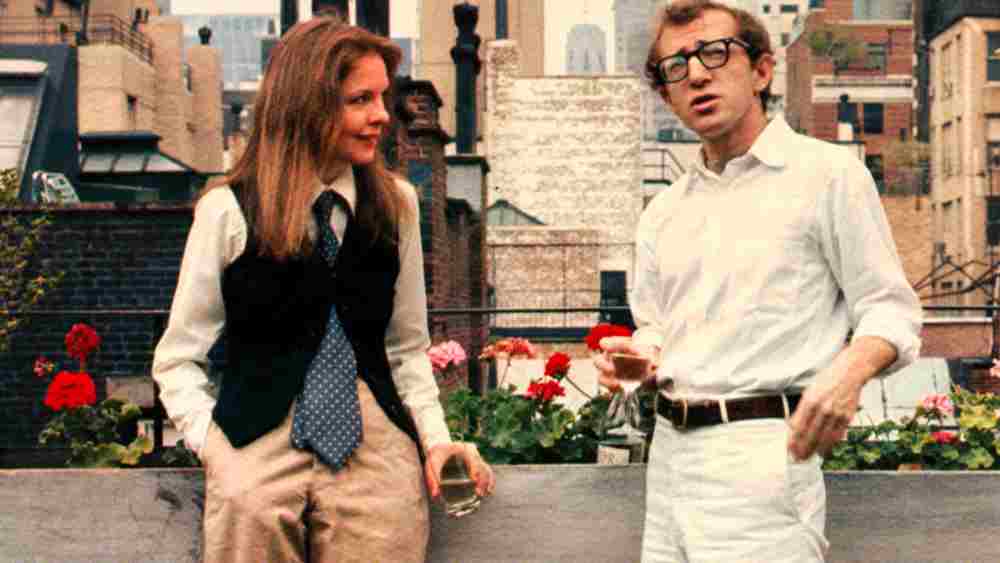
Taking the subway back to Midtown, we have 1977’s Best Picture Oscar winner Annie Hall. It’s actor-director Woody Allen’s crowning jewel, which has spawned legions of “neurotic” fans. A uniquely crafted New York City tale about a couple (played by Woody Allen and Diane Keaton as titular Annie Hall), this movie unpacks a lot. It’s romance, satire, realism, comedy, all rolled into one.
Woody Allen’s character even breaks the fourth wall of art and speaks to us in the audience. There’s also animation! A tight movie of only 93 minutes, Annie Hall is impressive in its cinematic economy. Both characters showcase for the world the “loveably neurotic” side of New York City, all of the kooky intellectualism of many of its residents, mixed with all of their progressive individualism.
Interesting, too, though told from the perspective of Alvy Singer (Allen), the film can be considered “New York City feminist.” The 1970s was a powerful decade for the Women’s Liberation movement in New York City, and Annie Hall gives a nod to this transformative time. Diane Keaton won a well-deserved Oscar for her endearingly flaky Annie Hall. To quote her character – “La dee da!” And proud native New Yorker Woody Allen won a Best Director Oscar.
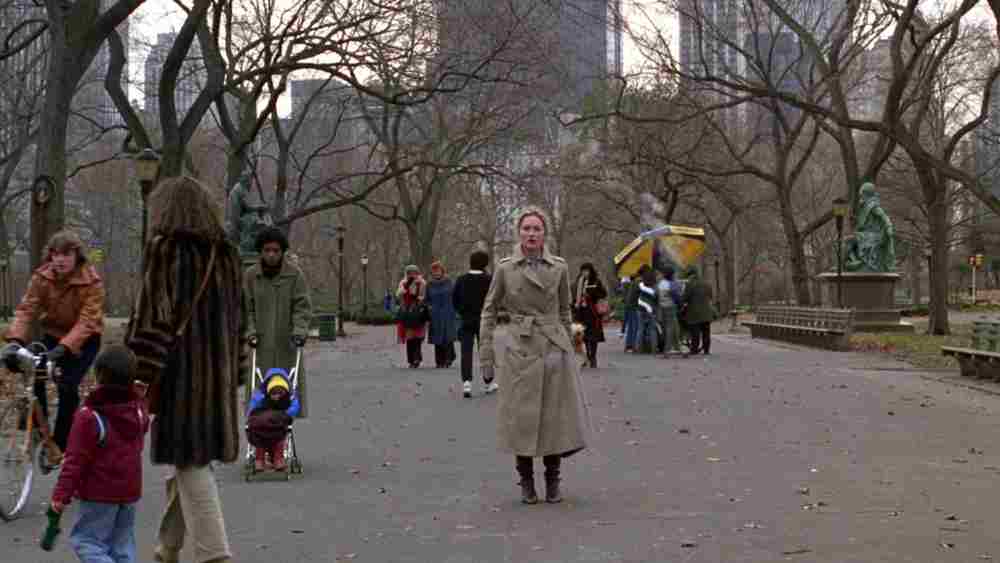
Continuing on the Women’s Lib tip, we have 1979’s heartbreakingly beautiful Kramer vs. Kramer. Yes, this is the New York City movie that earned three-time Oscar winner Meryl Streep her first prestigious Oscar. This film also won Best Picture and a slew of other Oscars.
A story about a sophisticated, upscale New York City couple where the wife Joanna (Streep) leaves her husband Ted (Hoffman) and their young son, Kramer vs. Kramer is an intense family drama. Who will win custody of their son? Should it automatically be the mother based on her sex, or should it be the father who has been with the son the whole time?
Kramer vs. Kramer asks these serious questions, and it highlights different sides to the feminist movement, ultimately revealing the complexity of gender-based roles and shifting values. New York City is an important figure in this drama, as again, the city was a consequential force in the 1970s feminist movement. In Kramer vs. Kramer, New York City serves as a reflective social mirror and a realistic anchor in this turbulent sea of family change.
Saturday Night Fever
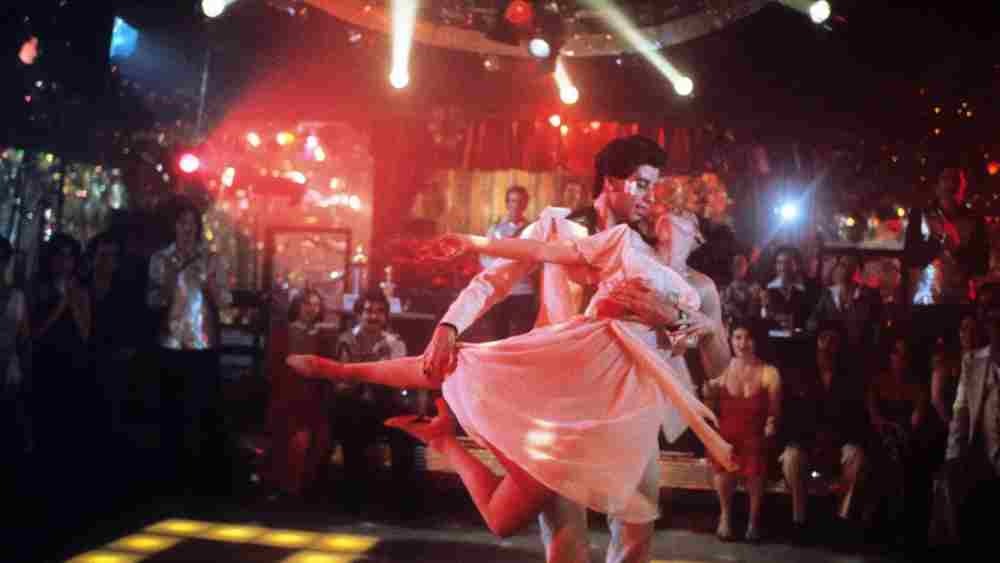
Rounding out 1970s gritty New York City, we have Brooklyn and the working-class neighborhood of Bay Ridge. No introduction needed for this blockbuster hit, let’s don our bellbottoms for 1977’s Saturday Night Fever. It’s a movie with an iconic opening scene – actor John Travolta struts down the sidewalk as Italian-American character Tony Manero to a cool disco tune by the iconic Bee Gees.
This scene sets the tone for a truly rhythmic, gutsy, and proud movie about ambition and dreams. Sometimes even native New Yorkers fantasize about traveling to a different, more glitzy part of New York City. It’s hard to not talk Saturday Night Fever when thinking of New York City, the 1970s, and disco music. All are inextricably linked in our pop culture consciousness for eternity. This movie was that big.
And for all its whimsical coolness, the film is still wonderfully serious and real. Maybe if it had been made fifteen years earlier, it would’ve been filmed on a grand set, with highly choreographed dance numbers, fancy costumes, and a fake above-ground subway. And for sure it wouldn’t have discussed sex and suicide in such an explicit, graphic manner. But lucky for us, Saturday Night Fever was a tribute to its 1970s New Hollywood time, its New York City story, and perhaps most importantly, its New York City film location. The end result is a movie that is invigoratingly memorable, deeply human, and a true embodiment of both the dark and light realties of New York City.
Conclusion
From 1969’s Midnight Cowboy to 1979’s Kramer vs. Kramer, the streets of New York City have been an awe-inspiring film locale that some might say are outright unsurpassable. For a filmmaker, the possibilities feel endless. From the northern tip of the Bronx down to the southern end of Staten Island (first stopping at the legendary Godfather house on Emerson Hill in Staten Island, of course), a director can bring their vision to life with amazingly bold, striking, realistic elements.
What are some of your favorite gritty 1970s New York City movies? If you like the above, add these to your list – The Owl and the Pussycat (1970), The French Connection (1971), Shaft (1971), Klute (1971), Three Days of the Condor (1975) and An Unmarried Woman (1978). These are just a few. Happy watching and filming!
